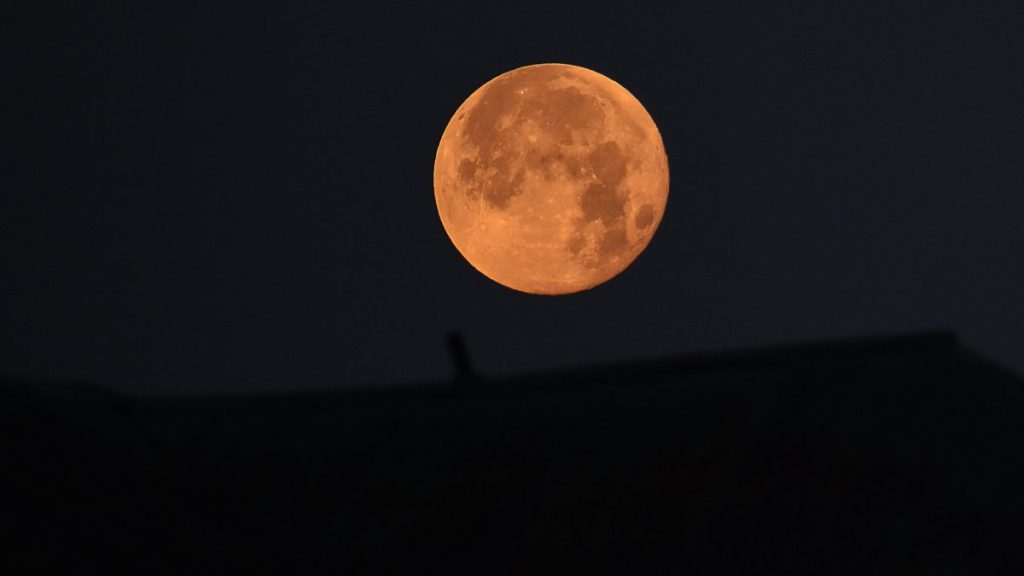Get your Bonnie Tyler cassettes ready because this weekend is the total lunar eclipse.
On May 15, at approximately 9:11 p.m. PT, the Earth will pass between the sun and the moon, resulting in a shadow or eclipse on the lunar surface. For us little earthlings, that means our normally bright moon will take on a dark, coppery look.
It’s yet another fascinating astronomical event happening this week, following the release of the first ever picture of our galaxy’s supermassive black hole. Space is just plain cool.
So, what’s going on up there this weekend? Scroll on to learn more.
Is there anything different about this lunar eclipse?
We’ve seen lunar eclipses before and they’ll happen again, but that doesn’t mean you shouldn’t take time to go outside and check this one out. This weekend’s event is special in that it’s a total lunar eclipse — the sun, Earth, and moon are in perfect alignment to shadow the entire surface of the moon as the Earth passes between them. This is different from a partial eclipse, in which the eclipsing shadow grows but never fully covers the surface, and a penumbral eclipse, where the moon only travels through the Earth’s penumbra and thus barely gets any shadow.
This weekend’s events converge with May’s full moon, which some are calling a Flower Moon and others additionally label a Super Moon. However, there’s no clear consensus on what those names really mean since they’re not official astronomical terms. You may also see the phrase “Blood Moon” thrown around, which is mainly a fun way of describing the red hue given to the moon as light from the sun escapes and passes through the Earth’s atmosphere.
Just know that the lunar body will appear extremely bulbous.
How often does a lunar eclipse happen?
Lunar eclipses only occur when there is a full moon, but they don’t happen every full moon. It takes a specific alignment of the three celestial bodies to result in a lunar eclipse, as the moon’s slightly tilted orbit often prevents the perfect pass.
According to NASA, eclipse seasons generally last about 35 days and occur around every six months. Lunar eclipses only happen when a full moon pops up during an eclipse season and everything is in the right place. The last total lunar eclipse was almost one year ago, on May 26, 2021.
What time does the lunar eclipse start?
The peak color changing of the lunar eclipse is estimated to begin at 9:11 p.m. PT — that’s 12:11 a.m. ET for East Coast residents or 4:11 a.m. UTC.
You can expect to see the beginning of the eclipse a few hours earlier, however, with the moon estimated to reach 50 percent coverage around 7:59 p.m. PT. The reddish hue will continue to spread across the moon’s surface until it reaches its total eclipse.
What’s the best way to view the lunar eclipse?
Just head outside! Unlike a solar eclipse, lunar eclipses are completely safe to view without any protective eyewear.
Keep in mind, lunar eclipses are only viewable from one half of the Earth at a time. This one will be visible in North and South America, Europe, and parts of Africa. So don’t miss your turn!
If I can’t go outside to see, can I watch the eclipse elsewhere?
Fortunately for all, NASA will be livestreaming the eclipse on its website and YouTube Channel beginning at 11 p.m. ET. The stream will also include a live Q&A with NASA experts, answering viewers’ questions about the moon and space in real time. Anyone can submit a question using the #askNASA hashtag on Twitter.
You can tune in to the livestream countdown on YouTube.
On the lunar eclipse page, NASA also lists other regional live streams, including those broadcasting from around the world, like in Rome, Italy, and Iturrietta, Spain. Check them out for an all day global viewing event.

